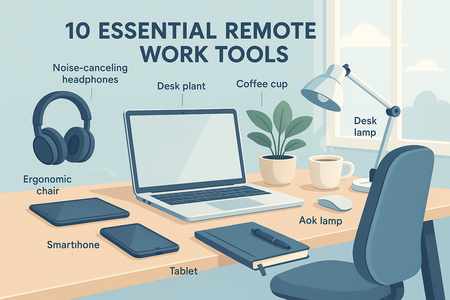Improving checkout conversion rates is not about flashy redesigns or full-scale rebuilds. It’s often the small, overlooked user experience (UX) elements that make the most significant difference. For e-commerce brands and digital businesses, optimizing the checkout flow can mean the difference between scaling profitably and leaking revenue at the finish line.
A high-converting checkout process starts with frictionless design. From micro-interactions to layout hierarchy, every decision made within the checkout funnel should support clarity, trust, and ease. According to Shopify, reducing friction in the checkout process can lift conversion rates by as much as 35 percent for direct-to-consumer brands.
This guide outlines seven UX fixes that consistently drive measurable results.
1. Prioritize Form Field Clarity and Reduction
The average checkout form contains over a dozen fields. Yet multiple studies show that users abandon carts when faced with overwhelming or confusing input requests. To increase checkout conversion rates, every field must earn its place.
Use smart defaults, auto-detect features (like country and zip code), and conditional logic to minimize manual input. Removing non-essential fields or combining related ones improves perceived effort. According to Baymard Institute, 18 percent of users abandon checkout due to a complicated process. A simplified form structure directly addresses this issue.
2. Enable Guest Checkout Without Delay
Forced account creation remains one of the most common causes of checkout abandonment. Users often add products with intent to purchase but bounce when asked to register.
Allowing guest checkout eliminates this barrier. A subtle prompt to create an account after purchase still captures data without interrupting the flow. Brands like ASOS and Nike report increased conversions after making this change. It aligns with the frictionless UX philosophy that underpins high-performing funnels.
3. Make Trust Elements Visible (But Not Distracting)
At the checkout stage, trust is currency. Payment logos, security seals, and privacy reassurances matter — but their placement and design must balance visibility with visual hierarchy.
Incorporating familiar logos (Visa, Mastercard, PayPal), SSL badge indicators, and links to privacy policies fosters buyer confidence. Just as importantly, these should appear close to the payment submission button, not buried in a footer. A case study from Baymard shows that a well-placed security badge can increase checkout completions by 17 percent.
4. Simplify Cart Editing Within Checkout
If users can’t easily update quantities, change product variants, or remove items during checkout, they’re more likely to abandon the process entirely. Seamless cart editing, preferably inline and without forcing a back-navigation loop, improves control.
UX best practices suggest keeping a persistent, editable order summary panel throughout the checkout process. This not only improves transparency but reduces last-minute hesitation. Smart cart UI reflects modern design principles covered in the Ukiyo services approach to ecommerce UX transformation.
5. Optimize Mobile Checkout as a Standalone Flow
Over 60 percent of e-commerce traffic comes from mobile devices, yet mobile checkout still suffers from clunky interfaces and poorly adapted forms. Optimizing for mobile is not about shrinking the desktop experience. It requires designing a separate flow that accounts for one-thumb interaction, responsive field layouts, and persistent CTAs.
One study from Statista found that mobile cart abandonment rates hover above 80 percent due in part to UX challenges. Streamlining the mobile journey with native pickers, auto-fill, and larger tap targets significantly boosts completion rates. Google’s UX Playbooks provide guidance that reinforces this need for mobile-first checkout optimization.
6. Offer Multiple Payment Methods, Prominently
Digital wallets, installment plans, and region-specific options have become table stakes. Limiting checkout to credit card only is a known conversion killer, especially for global or Gen Z audiences.
Services like Shop Pay, Apple Pay, and Klarna not only meet user expectations but also offer one-tap or zero-friction experiences. The placement of these options — ideally at the top of the payment section — can accelerate conversion. According to Shopify’s internal benchmarks, brands offering accelerated checkouts saw a 50 percent increase in mobile conversion rates.
7. Use Progress Indicators That Set Expectations
Progress indicators reduce uncertainty. Checkout is a multi-step process, and users need to know where they are and what remains. A simple visual tracker with labeled stages (Shipping, Payment, Confirmation) boosts confidence.
This psychological reinforcement is supported by Nielsen Norman Group findings, which highlight how visual indicators reduce bounce rates in multi-step flows. Crucially, progress bars should reflect real steps, not artificially inflated stages meant to manipulate perception.
Why UX Fixes Work Better Than Discounts
Many brands turn to discounting to convert hesitant users. While this can work short term, optimizing UX delivers long-term margin-friendly gains. Better UX directly enhances perceived brand credibility, customer satisfaction, and checkout efficiency — all without reducing average order value.
Founders and creative marketers operating in competitive verticals such as fashion, lifestyle, or tech often overlook checkout UX in favor of acquisition strategies. Yet, as covered in Ukiyo’s Marketing Mastery resource, growth begins with fixing foundational friction points.
How to Prioritize Fixes Based on Data
UX improvements are most effective when driven by analytics. Heatmaps, funnel analytics, and form drop-off reports can reveal bottlenecks. Before making wholesale changes, evaluate where users are bouncing, hesitating, or returning.
Tools like Hotjar, GA4, and FullStory allow granular insight into scroll behavior, field-level drop-off, and rage clicks. The most impactful fix is not always the most obvious — sometimes it's a mislabeled field or a mobile display glitch.
Final Thought
A high-converting checkout is rarely built overnight. It is the result of thoughtful iteration, UX empathy, and data-backed refinement. Each of the seven fixes outlined here offers a fast, tangible improvement path. For brands scaling digital products or physical goods, these tweaks often compound into significant growth.
For additional resources on building checkout experiences that convert, the Ukiyo Blog features ongoing analysis of UX trends, automation tools, and digital strategy frameworks backed by real-world testing.






0 comments